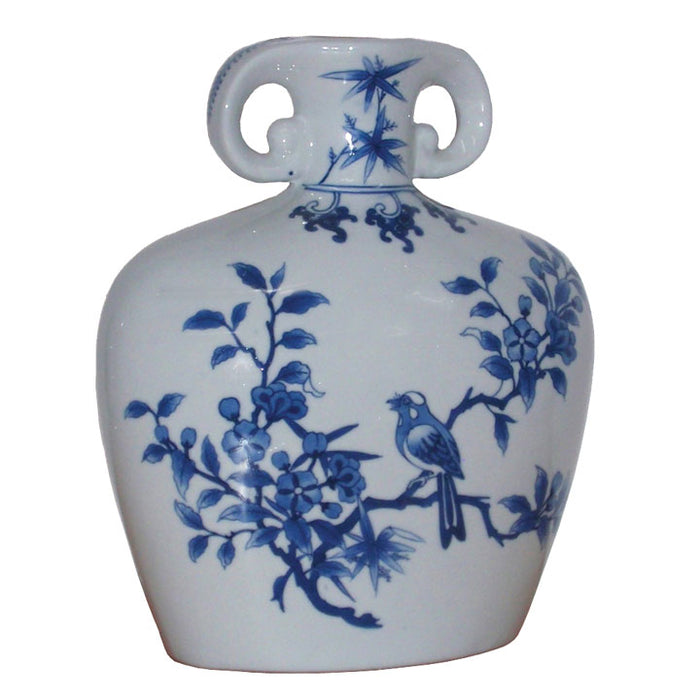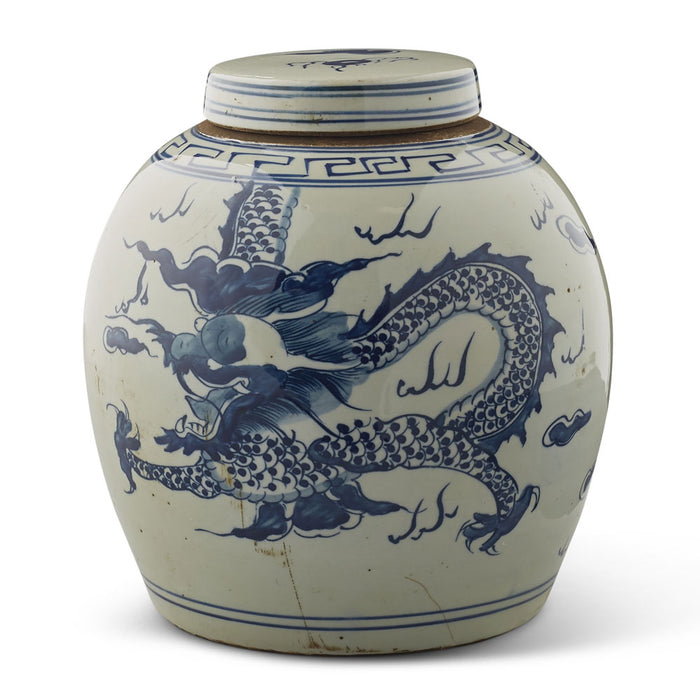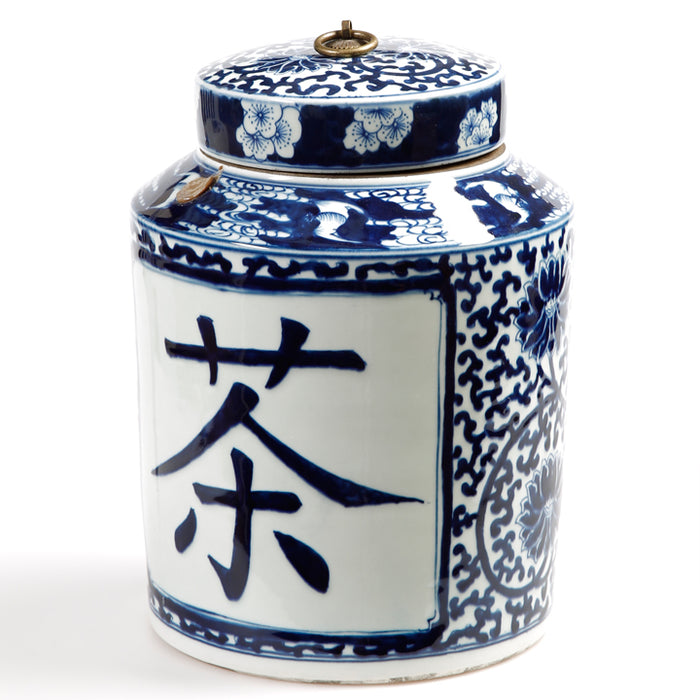 When you think of Chinese vases the chances are that images of delicate painted blue and white porcelain pieces spring to mind. However, there’s so much more to these beautiful objects, which have long formed an integral part of Chinese design and craftsmanship. From large and imposing vases decorated with birds, fish or flowers, to charming stoneware vessels, there’s a Chinese vase for every room in your home.
When you think of Chinese vases the chances are that images of delicate painted blue and white porcelain pieces spring to mind. However, there’s so much more to these beautiful objects, which have long formed an integral part of Chinese design and craftsmanship. From large and imposing vases decorated with birds, fish or flowers, to charming stoneware vessels, there’s a Chinese vase for every room in your home.

The beauty and timeless elegance of Chinese vases
Perhaps the most iconic Chinese ceramics, blue and white vases are available in a huge range of patterns. If there’s one thing they have in common, though, it’s the intricacy of design and by studying the painted patterns, there’s no doubt that you’ll be awed by the skill which has gone into creating them.
Originating during the Tang dynasty (618-907), Chinese blue and white vases gained prominence in the Yuan (1271-1368) dynasty, with their popularity soaring in the Ming (1368-1644) and Qing (1644-1911) dynasties. The quintessential blue and white palette is achieved by using cobalt blue pigments under a translucent glaze, fired at high temperatures. This technique allows for a striking contrast that accentuates the detailed designs.
Motifs and meaning in blue and white Chinese vases

The motifs adorning these vases are varied and culturally significant. Fish, often koi, symbolise abundance and good fortune, and are depicted amidst aquatic flora, showcasing a harmonious blend of nature and art. Floral patterns, including the revered lotus and peony, are common, representing purity, beauty, and seasonal cycles. Rural scenes are another popular theme, capturing the essence of Chinese pastoral life and landscapes. These scenes often include mountains, rivers, and structures, intertwined with elements of folklore and daily life, reflecting Chinese culture’s deep appreciation of nature and rural tranquillity.
Here at Shimu our ceramics collection features a selection of beautiful blue and white vases for your home. From porcelain ceramic vase lamp bases, perfect for adding a point of interest, to delicate vases decorated in traditional floral designs, you’ll find that our selection is as varied as these beautiful objects themselves.
Antique Chinese vases and Porcelain
Steeped in history and made with great skill and artistry, antique Chinese vases are treasured and highly sought-after collectables which encapsulate China’s rich cultural heritage. Vases have been part of Chinese decorative culture for many hundreds of years and whilst the earliest examples date back to the Neolithic period, over the centuries their sophistication and variety have flourished.
The Tang dynasty introduced sancai, or three-colour glazing, while the Song dynasty (960-1279) is celebrated for its monochrome and subtly glazed ceramics. The Ming dynasty, however, marked a zenith in vase production, with the introduction of the blue and white porcelain that became synonymous with Chinese ceramics.
The designs on these vases often held symbolic meanings, reflecting the philosophical and religious beliefs of the time. Dragons, phoenixes, and other mythical creatures were common, symbolising power and good fortune. Floral motifs, landscapes, and scenes from literature were also prevalent, each telling a story or conveying a moral lesson.
Chinese antique vases are now not only valued for their beauty but also for their contribution to understanding Chinese history and society. The craftsmanship, rarity, and condition of these vases make them highly sought after in the antique market, with the rarest pieces fetching astronomical prices at auctions. Their enduring appeal lies in their ability to bridge the past and present, offering a tangible connection to China’s rich cultural heritage.
Chinese Vase Markings
Chinese vase markings, often found on the base, are pivotal in identifying the provenance and period of an antique vase. These markings, typically in Chinese characters, can denote the dynasty and the reign during which the vase was crafted. For instance, a mark reading "Da Qing Qianlong Nian Zhi" translates to "Made during the Qianlong Reign of the Great Qing Dynasty".
Such markings are not just identifying marks; they also represent the creative heritage and artistic development of Chinese ceramics. However, deciphering these marks requires expertise, as reproductions and forgeries often mimic them. Authentic marks are usually symmetrical, with a finesse that reflects the skill of the artisans of the time.

The many designs and shapes of Chinese vases
The diverse shapes of Chinese vases reflect the evolution of Chinese ceramics in general and the cultural significance attributed to each form. The baluster vase, with its voluptuous body and narrow neck, is a classic shape, often used in pairs to symbolise unity. You’ll often see vases in this shape decorated in classic blue and white painted patterns.
The meiping vase, originally designed for holding plum wine, features a sleek, tall body with a narrow base, ideal for showcasing the elegance of a single branch of blossoms. The gourd-shaped vase, inspired by the natural form of a gourd, consists of a spherical lower body and a tapered upper section, symbolising fertility and abundance.
The yuhuchunping, or pear-shaped vase, with its graceful, rounded body tapering to a slender neck, was favoured for its aesthetic balance and simplicity. Each shape, whether created for practical use or purely for aesthetic appreciation, embodies the artistic sensibilities and philosophical concepts of the period in which it was crafted, making Chinese vases much more than objects for displaying flowers, but rather, embodiments of cultural expression.
The Story of Blue and White Ceramics

The Emergence in Tang and Song Dynasties
It was in the Tang dynasty that the first hints of blue and white ware began to appear, but during the Song dynasty that the techniques improved significantly. This era saw the introduction of cobalt blue, imported from Persia, which gave the ceramics their distinctive deep blue hue.
Yuan Dynasty: The Golden Age
The Yuan dynasty marked the golden age of blue and white ceramics. The introduction of high-quality cobalt blue from the Middle East allowed for more vibrant and intricate designs. The imperial kilns of Jingdezhen, often referred to as the 'Porcelain Capital', played a pivotal role in refining the art.
Influence of the Silk Road
The Silk Road was instrumental in the spread of blue and white ceramics beyond China's borders. As traders and explorers travelled, they carried these beautiful creations across Asia and eventually to Europe and the Middle East. This exchange not only popularised Chinese ceramics worldwide but also led to a fusion of artistic techniques and styles, a cross-cultural dialogue that is evident in many of the oriental porcelain and ceramics we see today.
Discover our range of beautiful blue and white Chinese vases
As the home of beautiful Chinese and oriental furniture, accessories and homewares, here at Shimu we offer a range of lovely blue and white Chinese vases for your home. Our collection includes something for all interiors, including imposing Zhu Fu vases and delicate bud vases, along with blue and white painted ceramic vase lamp bases.
Once you’ve chosen the perfect Chinese vase, why not browse our collections of furniture and accessories? With a wealth of superb quality options available through our online shop and at our showroom in Greengates, we have everything from original antique furniture pieces, to handmade ceramics, textiles, wall art and much more.
Nkuku Throws | Chinese Wood Panel | Chinese Wardrobes | Chinese Wardrobe Cabinet | Chinese Wall Art | Oriental Trunk | Oriental Stoneware | Chinese Storage Chests | Chinese Antique Dealers London | Stone Tang Horses | Wooden Buddha Statues | Apothecary Cabinet | Camphor Wood Chests | Chinese Tea Table | Antiques from China | Chinese Ceramics | Chinese Boxes | Oriental Mirror | Oriental Paintings | Buddha Statue Hands | Elm Sideboards | Blue Ceramic Planter | Blue and White Chinese Vases | Oriental Shop



